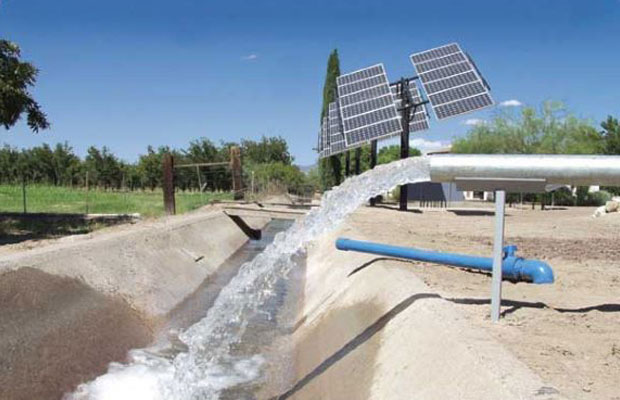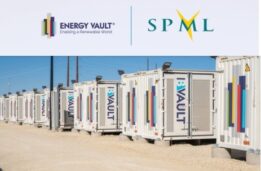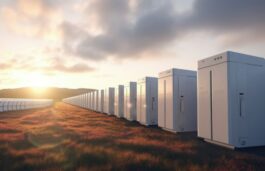
MNRE has issued guidelines for the implementation of the Component-C of the Rs 34,422 crore PM Kisan Urja Suraksha evam Uthan Mahabhiyan (KUSUM) scheme.

The Ministry of New and Renewable Energy (MNRE) has issued guidelines for the implementation of the Component-C of the Rs 34,422 crore Pradhan Mantri-Kisan Urja Suraksha evam Uthan Mahabhiyan (PM-KUSUM) scheme.
Component-C of the scheme involves the solarisation of 10 lakh grid-connected pumps. Under this component, individual farmers having a grid-connected agriculture pump will be supported to solarise pumps. Solar PV capacity up to two times of pump capacity in kW is allowed under the scheme. CFA similar to that under the component-B of the scheme will be applicable.
As per provisions of the scheme, initially 1 lakh grid-connected pumps are targeted to be solarised on a pilot basis and further scale-up will be carried out after the evaluation of the pilot phase.
The guidelines for the implementation of the scheme were issued in July this year stating that the central public sector undertakings and state implementation agencies will carry out the tendering process. And now, the detailed guidelines which include the applicable standards and specifications, have been issued with the aim of smoothing the implementation of the Component-C.
As per the guidelines, the following options will be made available for the solarisation of agricultural pumps:
- Net-Metering- In this case, the agriculture pump will continue to run at rated capacity taking power from solar panels and balance power from the grid, if required, and in case solar power generation is higher than required by the pump, the additional solar power would be fed to the grid. The farmer would be able to import and export power to the grid.
- Pump to run on Solar Power Only- In this case, the pump will only run on solar power as in the case of a stand-alone solar pump and no power will be drawn from the grid for the operation of the pump. The existing motor pump set will have to be replaced with AC/DC solar water pumping system as per MNRE specification for standalone solar pump and when the pump is not running the solar power can be fed into the grid through a suitable grid-tied inverter.
Furthermore, depending upon the model adopted, the Discoms will purchase solar power from the farmer at the rate decided by the respective State/SERC. Component-C of the scheme will be implemented on a pilot basis, therefore, the implementing agencies (IA) may workout innovative technical and financial models and test them during the pilot phase. Distribution losses for the selected feeder may be accounted for and internalised in the financial settlement through an appropriate system worked out in consultation with the concerned SERC.
Once the feeders are identified and the implementation model is selected, the IA will conduct information and awareness campaigns for the farmers to share the details of the scheme and educate them about the implementation model and benefits of participation in the scheme. Feeder wise committee of farmers may be formed, which will coordinate amongst the participating members and other agencies involved in the implementation of the Scheme.
After which the IA shall invite bids for the empanelment of Vendors through a transparent bidding process. Empanelment may be state-wide or feeder-wide, as per the decision of the state. To ensure quality and post-installation services, only manufacturers of solar panels or manufacturers of solar water pumps would be allowed to participate in the bidding process.
For more information click here.



























